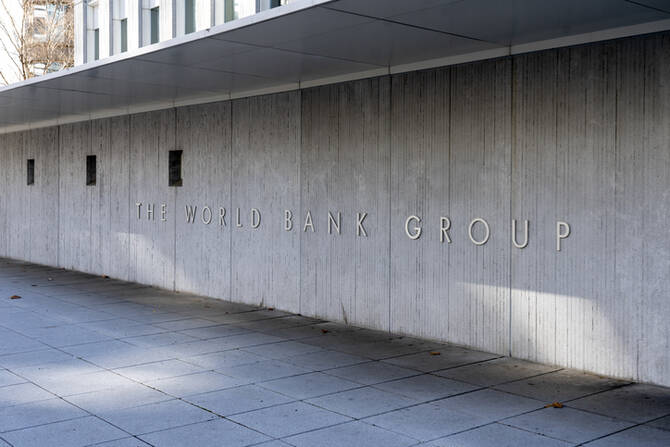RIYADH: The Middle East and North Africa is on track for a modest economic recovery after 2024’s muted growth, with real gross domestic product projected to rise 2.6 percent in 2025 and 3.7 percent in 2026, the World Bank has said.
Its latest economic outlook, titled “Shifting Gears: The Private Sector as an Engine of Growth in the Middle East and North Africa,” attributed the improved forecast to the easing of OPEC+ production cuts, a rebound in agricultural output across oil-importing economies, and resilient private consumption.
This follows growth of just 1.9 percent in 2024, with the report noting that while the recovery is underway, the region remains vulnerable to geopolitical tensions, climate-related disruptions, and volatility in global oil and trade markets.
Ousmane Dione, World Bank vice president for the Middle East and North Africa, said in the report’s foreword: “Our macroeconomists forecast a moderate acceleration of growth in 2025 and 2026.
“Realizing the potential of the region will depend on navigating risks and advancing much-needed reforms.”
He added that the economic outlook remains uncertain, with persistent challenges and fragility shaping the region’s trajectory.
“While some positive signs are emerging in conflict-affected economies, the situation remains fragile, and deep structural challenges persist amidst global policy uncertainty,” Dione noted.
The report added that economic activity in the Gulf Cooperation Council countries, including Saudi Arabia, is expected to benefit from rising oil output following OPEC+’s decision to accelerate production increases from May.
Saudi Arabia’s GDP is projected to grow by 2.8 percent in 2025, compared to 1.3 percent in 2024, with growth driven by non-oil sectors, the World Bank said.
For oil-importing countries such as Egypt and Morocco, the easing of inflation and improvements in agriculture are expected to support higher growth.
Egypt’s growth is forecast to reach 3.8 percent in the fiscal year 2025, while Morocco is expected to grow by 3.4 percent.
The World Bank report pointed out that the region’s long-standing low productivity is partly due to the lack of a dynamic private sector.
It noted that few firms invest, innovate or provide formal training, while a significant divide persists between a small formal sector and a large informal one.
“A dynamic private sector is essential to unlocking sustainable growth and prosperity in the region,” said Roberta Gatti, World Bank chief economist for MENA.
“To realize this potential, governments across the region must embrace their role as stewards of competitive markets,” she added.
The report also underscored the need to better harness the region’s human capital, particularly by improving female participation in the labor market.
“The region has long underused human capital. Women are largely left out of the labor market. Businesses can find more talent by attracting women leaders, who in turn will hire more women,” said Dione.
“Closing the gender employment gap could substantially boost income per capita by around 50 percent in a typical MENA economy,” he added.
The report has called for increased competition, improvements in the regulatory environment, better data access, and a reconsideration of the role of state-owned enterprises.
It also highlighted the need for firms to adopt improved management practices and leverage the untapped potential of women entrepreneurs and employees.
While the outlook signals a cautious recovery, the World Bank stressed that unlocking the full potential of the private sector is essential to achieving long-term, inclusive economic growth across the region.
























